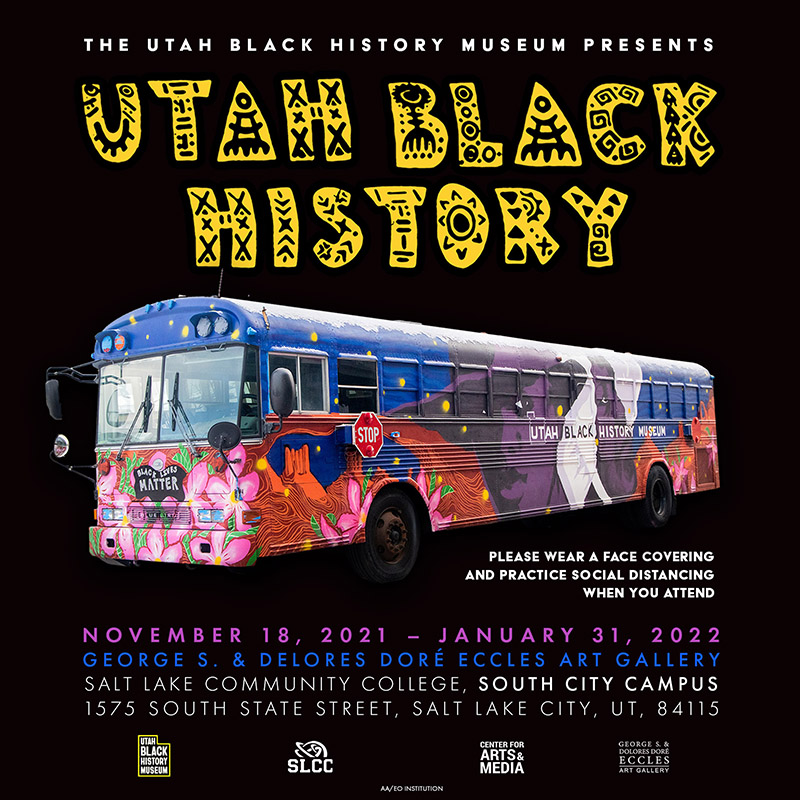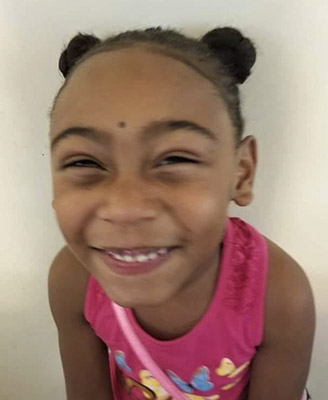Utah Black History

“Utah Black History”
November 18-January 31
George S. and Doré Delores Eccles Art Gallery
South City Campus, Center for Arts & Media
1575 S State Street Salt Lake City, UT 84115
Please wear a face covering and practice social distancing when you attend.
In "Utah Black History," an exhibit presented by the Utah Black History Museum, gallery-goers will learn about the contributions of the Black community and about the Black experience in Utah through the stories of those who have lived here, beginning chronologically with some of the very first to set foot in the state, as well as artifacts and ephemera contextualizing some of the visual culture that surrounded Black life in the nineteenth and twentieth centuries. The museum's bus, which itself is a magnificent work of art painted by local muralists Liz Lambson and Gretel Tam, will be on site for key dates during the show's 10 week run at SLCC's South City campus including the final weekend of the Sundance Film Festival.
In Memoriam
Izzy Tichenor (2011-2021)

Izzy, a kind, bright, spiritual, autistic, ten-year-old student at Foxboro Elementary School in North Salt Lake, Utah, had a passion for dance and gymnastics. She dreamed of moving to New York someday to pursue a career as a professional dancer or cheerleader. However, Izzy became a victim of bulling at school from both her fellow students and her teacher because of her differences from them. The many complaints filed against the school by her mother, Brittany Tichenor, were not taken seriously by school and district officials. On November 6, 2021, Izzy took her own life.
In 2021, the U.S. Department of Justice published its findings from its investigation into allegations of bullying of Black and Asian American students launched in 2019. The report shows that the Justice Department found "persistent failures to respond to reports of race-based harassment of Black and Asian American students by district staff and students." They found hundreds of documented incidents of physical assaults and derogatory racial language from 2015 to 2020. For example, in the district's 27 schools from 2015 to 2020 there were 215 reported incidents of Black students being called "Nigger."
In October 2021, the Davis School District and the Department of Justice reached an agreement about how to address the hostile environment that had been permitted in its 27 schools. The school district has agreed to actions such as updating and consulting their anti-discrimination policies, the creation of a department to address complaints, re-training staff, and making students and parents aware of how they can report incidents. Assistant Attorney General Kristen Clarke of the Civil Rights Division states, "Pervasive racial harassment and other forms of racial discrimination in public schools violate the Constitution's most basic promise of equal protection. This agreement will help generate the institutional change necessary to keep Black and Asian-American students safe. We look forward to Davis demonstrating to its students and school community that it will no longer tolerate racial discrimination in its schools." The Acting United States Attorney for the District of Utah, Andrea Martinez, hopes, "As the federal partners who work and live in this community, we are hopeful that this agreement is the start of a new chapter in which Black and Asian-American students will attend Davis schools without fear." This investigation confirms Izzy's experiences while in school. Izzy's tragic death from suicide and the report show that there is still much progress that is needed to ensure every person's right to "life, liberty, and the pursuit of happiness."
A Letter to Utah Students
During the last decade Utah Students have repeatedly made national news for their treatment of fellow students of color. Whether meant to be a prank or a product of peer pressure, these events are concerning, particularly to their Black peers. In this letter, high school student Renée Martial writes about her experiences as a Black student in Utah.
Read "A Letter to Utah Students"
Passing Slavery in Utah (1852)
In 1852, Brigham Young, the LDS church's second president and the first governor of the Utah territory, sought to make Utah a slave-owning territory to encourage southern Mormons to move west and increase the territory's population. On February 4, 1852, the territory government passed the "Act in Relation to Service," making slavery legal in the territory. Not everyone supported this—another church leader, Orson Pratt, fervently argued against slavery.